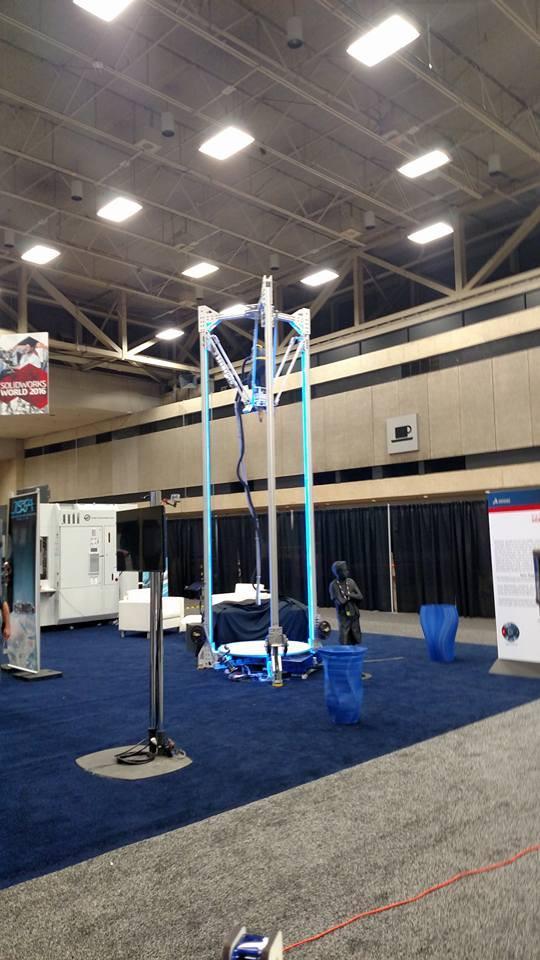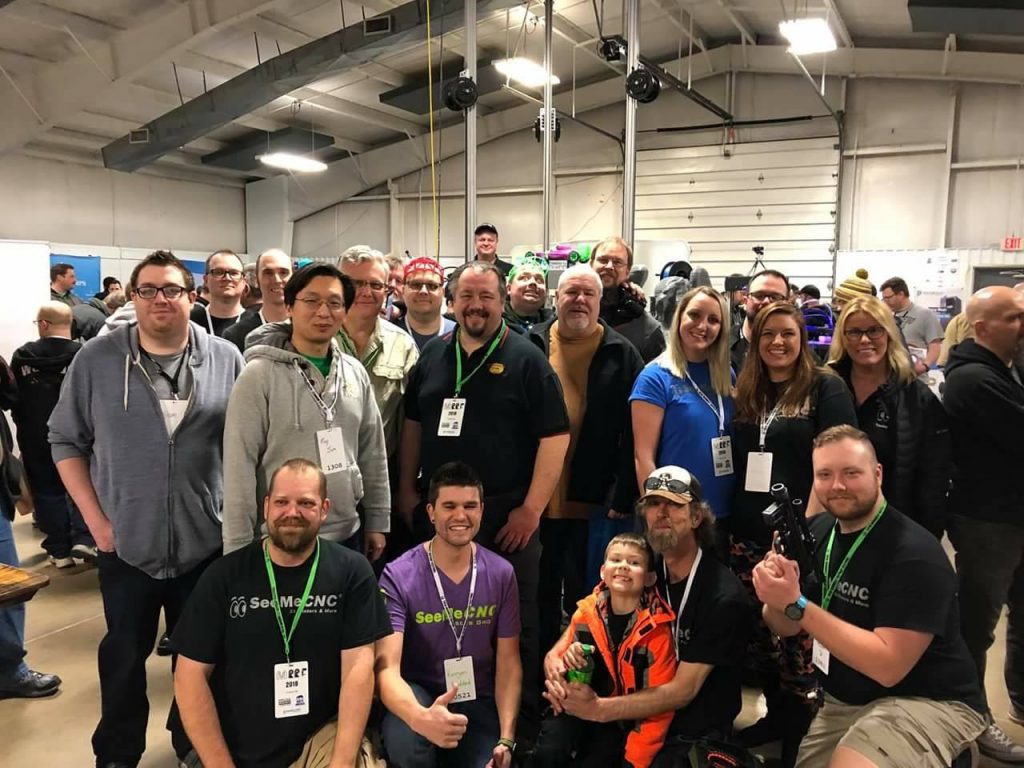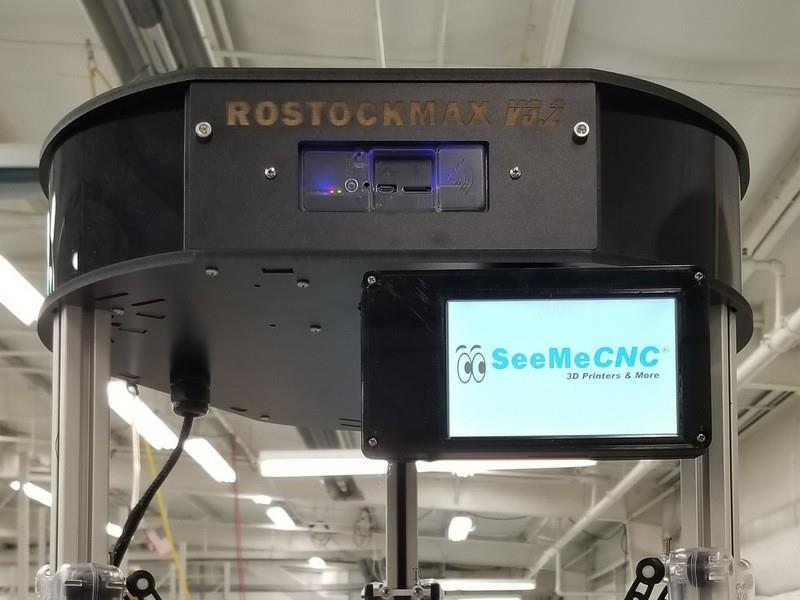To mark the 10th Anniversary of RepRap, 3D Printing Industry is interviewing early pioneers from the RepRap project and others who continue to share their work through Open Source licenses.
Steve Wygant is the founder and CEO of SeeMeCNC. The Indiana based company designs and builds a variety of Delta 3D printers including the ARTEMIS and Rostock Max v3.
Visitors to 3D printing shows, such as the Midwest RepRap Festival, may have also seen the Partdaddy – a large format Delta 3D printer capable of extruding 2 – 4lbs of pelletized feedstock and creating prints over 9 feet (3 meters) tall.
In this article Steve Wygant discusses how the RepRap project has created 3D printing communities and helped launch businesses.
Michael Petch: How would you describe the importance of the RepRap project?
Steve Wygant: While the RepRap project is about making self replicating rapid prototyping machines, the RepRap project has also liberated individuals and businesses by giving access to a technology they might not otherwise afford. The project has opened opportunities for all skill levels to participate, improve, and contribute back to the through sharing their open source files. The nature of the RepRap project has spawned innovation from both businesses and individuals at an accelerated rate, much faster than the patent system. The community aspect of the project has helped support and build businesses, like ours, even though it is not the purpose of the project. Some of the most important aspects improve people’s lives, such as a low cost RepRap machine printing a prosthetic for a young person, like e-nable.org. There is a lot to say about the significance of Dr. Bowyer’s RepRap project, and the profound positive effect it has given people and advancement of additive manufacturing.

Michael Petch: How does RepRap relate to you now?
Steve Wygant: We used an open source design, gave attribution, and then posted our derivative of the probe design back to our github repository. While our expertise is manufacturing the whole printer, we adopt elements, like the Smart Effector, and then designed the probe portion into our new SE300 hotend. We then give credit back to duet3d by printing credits on the circuit board itself and releasing our design with an open license. We’ve also adopted the reprapfirmware control program and use it on the DUET control board. The advanced software and hardware are developed by think3dprint3d.com and escher3d.com along with community feedback and support. While the lofty goals of RepRap are to build a fully self replicating machine, our sharing of our work and derivatives of others hopefully play a part in the overall goal of the RepRap project.

Michael Petch: What is your perspective on the state of Open Source in 2018 and is there still a need for OS projects?
Steve Wygant: Open source projects tend to accelerate an idea through sharing and collaboration and the dynamic input from a large group of community members. Open projects are going strong, just search the github repositories. There you will find millions of software, firmware, and hardware for a variety of things. Searching “3D Printer” returns over 3000 results. Open sourcing can present new innovation as well as provide a lot of prior art. One example is a printer with a belt driven axis. At the bottom of this reprap.org/wiki/Cheaptrick post, in December of 2013, I wrote the “public domain legal description”. The significance is to avoid gridlock with patents.
Open source community driven projects develop and iterate extremely fast while patents stagnate an idea for 20 years. When I wrote the idea of replacing an axis with a belt, I created something new by simplifying the MakerBot patent of the automated build platform. I did not envision a printer like the conveyor machines with a tilted gantry, however, my open sourcing this method in the art of 3D printing leaves the door open for all types of conveyor belt machines. A print-bed conveyor belt axis is extremely significant and leaves the door open for other belt driven print bed 3D printers. The need as I see it helps lay down significant prior art which forces others who want to patent something to be very original. What I’m trying to say is that open source projects generally do more for society at a faster pace than does something with a patent.

Michael Petch: What are some of the key developments in 3D printing during the past decade?
Steve Wygant: While 3D printing technology is fairly old, in the past 10 years, the low cost of entry is huge. The significant improvements and development to each of the areas, I call machine elements. These developments just in our category of thermoplastic FFF (fused filament fabrication) 3D printers include the extruder and hotend, the control and firmware, and even the frame of the printer. Each of these areas have seen development by many different people.
Michael Petch: What is 3D printing currently missing, what would you like to see?
Steve Wygant: There are some features filling the void of machines being self diagnostic or tool changing. But missing are innovative solutions to speed up the process of additive manufacturing while keeping the consumer cost low. Also, the accessibility, or user friendliness will continue to improve. Printers keep getting closer to “push the button”, but will they make it? It’ll be a while. The advanced controls, like the DUET controller we use enable a browser wireless control of the machines. This makes uploading files, or changing machine settings, and monitoring the printer easier.
More information about SeeMeCNC is available online. You can read more in our 10th Anniversary of RepRap.
Make sure you subscribe to the 3D Printing Industry newsletter and follow us on social media.
Want to work in additive manufacturing or looking for a 3D printing job? Sign up for our free jobs service now.



